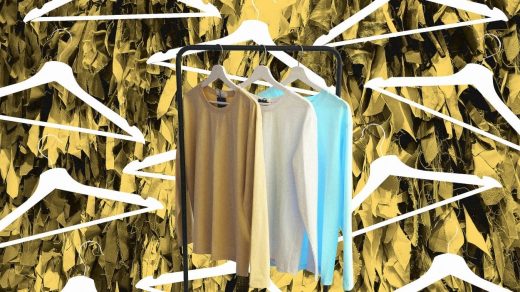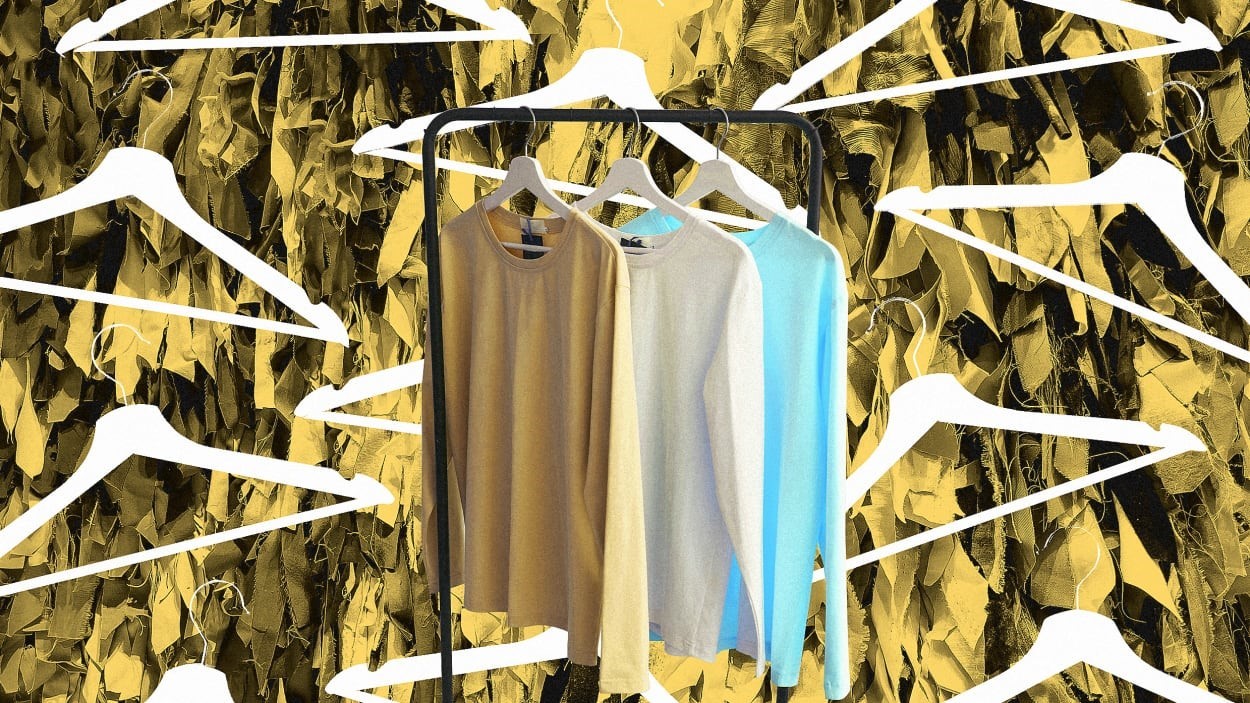Four simple ways to make your shopping habits more sustainable
As you write your resolutions for the year ahead, consider adding one more to your list: kill off fast fashion.
It might seem like an unrealistic goal. Overproduction in the $1.7 trillion global fashion industry is out of control, with 150 billion garments churned out every year for only 2 billion humans. This is destroying the planet. Fashion contributes 8% to global carbon emissions, pollutes waterways, and 92 million tons of textile waste clogs up our landfills and oceans every year.
But in the face of this enormous destruction, there’s a movement rising against it called “slow fashion.” There’s a growing community of people around the world boycotting mainstream fashion—including the brands they’ve shopped their whole lives—and opting for a more sustainable lifestyle. This includes buying less, shopping from ethical small businesses, and buying secondhand.
On the surface, these might seem like small, insignificant changes. But brands are paying close attention to consumers’ shopping behavior. Just ask Amanda Lee McCarty, who spent two decades as a buyer for large brands like Modcloth, Nasty Gal, and Urban Outfitters before leaving the industry to launch the Clotheshorse podcast, which promotes slow fashion. “For two decades, I was looking at sales data obsessively every day,” she recalls. “When you crunch the numbers and see that a style is not working, you never buy that again. Every decision we made had to do with what customers were telling us with their buying behaviors.”
McCarty saw the fashion industry go through a metamorphosis between the 2000s and the 2020s, as brands across the sector adopted the fast fashion business model. Quality and prices went down, while order volumes went up exponentially. Given that consumers helped create fast fashion in a relatively short period, McCarty believes that it is possible for them to also help reverse the trend. “Will it happen in a month? No, change takes time,” she says. “But brands are already getting the message that consumers are ready for something better.”
Here are four things you can do to shop more consciously in 2024.
Accept that your favorite brands are fast fashion
When we think about fast fashion, we might think of Shein, one of the biggest offenders on the market, which drops up to 10,000 new styles a day and sells them at rock bottom prices. (It has been accused of using forced labor and stealing independent designers’ work.)
But industry experts agree that the vast majority of fashion brands today qualify as fast fashion. The resale site Vestiaire Collective convened a panel of sustainability experts who helped define fast fashion; its hallmarks include low prices, fast production cycles, frequent sales, and a constant flow of new styles. As a result, it has banned 30 brands from its platform including Gap, Urban Outfitters, and Abercrombie and Fitch. “When you’re churning out products so quickly and cheaply, there’s no way to keep up the quality,” McCarty says. “That’s why clothes don’t fit, and they’re made from cheap fabrics.”
As you shop this year, think about your favorite brands. Have you noticed the quality declining? Have you noticed that products seem to go on sale days after they first drop? These are all signs that the brand is overproducing and contributing to the environmental catastrophe. If you stop shopping, the brands will notice. And if a critical mass of customers boycott them, opting for more ethical options, these brands will need to figure out how to win you back.
Support Brands’ Secondhand and Rental Options
Brands are already doing this. They’ve come to realize that consumers are looking for more sustainable shopping options, so many have launched secondhand and rental platforms. (Even fast fashion brands are into it: H&M, Zara, J.Crew, and Gap have recently launched secondhand sites, while Urban Outfitters has a rental service called Nuuly.)
If you must shop, consider using these new services. Not only is it better for the planet to keep products in circulation for longer, but as I’ve written before, it may compel these brands to rethink the design of their products so that they can last longer. And perhaps more importantly, it may allow these brands to fundamentally rethink their business models. If they can start generating income from resale and rental, they can rely less on selling new products to meet their sales targets.
Consider The Reason You’re Shopping
McCarty says there’s always the option of not shopping at all. After two decades with the fashion industry, she’s observed how brands must convince consumers to buy the enormous quantities of cheap clothes they’ve churned out. They do this partly through emotional manipulation. “The industry has made us believe that a new outfit will make us feel better,” she says. “You often do get a dopamine hit when you get something new, but then it fades and you feel like you need new clothes every single day of your life. And at fast fashion prices, you actually can do that.”
It’s hard to undo decades of social conditioning. The first step, McCarty says, is simply to realize that you may be shopping not because you actually need a product but because it feels good to buy it. Then, it comes down to finding alternatives to “retail therapy” that provide longer-lasting happiness, like connecting with friends or taking a walk. “We think this behavior is baked into us and that we almost can’t help it, but the good news is that we can,” she says.
Spread The Gospel of Slow Fashion
The only way the slow fashion movement will take off is if it gathers a critical mass. And right now, the average consumer isn’t thinking much about their shopping habits. When McCarty launched her podcast in 2020, she quickly learned that there is a devoted community that cares a lot about conscious consumerism, but there are many more people who simply have no idea that fashion is a problem or that overproduction is killing the planet.
So one of the most helpful things we can do in the new year is to gently share what we know. McCarty says it’s important not to make people feel guilty about their choices and to start conversations in a non-confrontational manner. You might explain to an older relative why many clothes no longer fit as well as they used to, or tend to be made from flimsier material. You can share a picture your vintage purchase on Instagram or share your own experiences about not buying as much. Think of it as counter-programming to the endless marketing that brands are pumping out at us.
(18)



